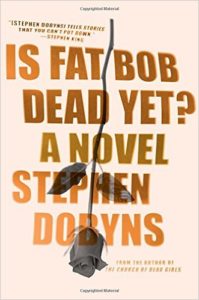For Love Can Turn Us Still (FLOTUS) – the wonderful new album of Lambchop is on par with their classics – the subtle electronic innovations intensify their palette instead of reaching for a bigger audience. The album of December. The album for the subversive christmas tree. The album for friends of Frank O’Hara poems. The album for people who love albums they can listen to forever. In one way, and this is no joke, it even supasses SGT. PEPPER. Not one weak track! Or will anybody tell me that „Good Morning Good Morning“ is not rather crappy?!
Going back in time: some of you may have a decent memory about the second Jethro Tull album, the one with the stand-up cover. STAND UP now got THE ELEVATED EDITION, with lots of footage, films and, excellence as usual, Steven Wilson‘ stereo and surround remixes. Even Ian Anderson’s Bach-Bourée can still create a shiver in this new ambience. And the elevated edition is a book, too, full of stunning episodes. 1968, 1969 revisited. Brian Whistler’s tales of the SACD of Weather Report’s TALE SPINNIN‘ would be perfect, too, here (I got it, I heard it, I love it – a rediscovery!), but the comments there have an extra-value, so we leave it in the blog diary for its own good.
And a small change in our third column of monthly appraisals: the term „philosophica“ can from now turn into „psychologica“, „artistica“, „graphica“ etc., dependant on the object of desire. Anybody who has something in mind? Mail your proposal of a review to manafonistas@gmx! The first idea is often the best and will be taken! That is, by the way, the address of the real Manafonista headquarter, 500 miles away from my living place. Otherwise (a quiet bravo for my understatement, please!) my enthusiastic review of the wonderful #42 of MONO.KULTUR incl. the adventurous, spellbinding talk with thrill-seeking SOPHIE CALLE, mastress of Houdini-esque ego-dissolution, will find its place there. (A day later: oh, wonderful, from the backyard of the MHQ, someone went enthusiastic about a book that has a very special, vague, nearly ungraspable topic: MOOD.)
The MANA THRILL PRIZE FACTORY 2016 is offering a fine collection of new thrillers and crime novels beyond mainstream, and Stephen Dobyn’s eccentric, funny, dark, hilarious „IS FAT BOB DEAD YET?“ is such a wonderful book with a beating heart, in spite of all its obliqueness. A thriller that evokes Elmore Leonard and Donald E. Westlake at their best, but adds several layers of absurdity and a narrative voice that suggests metafiction meets a Greek chorus meets Jane Austen …
In our BINGEWATCH TRANCE DECEMBER corner, two series of 2016 take center stage: as different as they are, these legal dramas offer rather dark tales: GOLIATH (season 1), a fresh take on the old John-Grisham school (it’s not written by Grisham though) with fabulous Billy Bob Thornton, and THE NIGHT OF (one season only!), mirroring the neo-realistic grittiness of the „noir“- underworlds of „The Wire“ or „True Detective“, in this case with fabulous John Turturro.
P.S. January 2017 will be the month of promising new works by Brian Eno (purely ambient this time, and, nevertheless, another landscape, another thinking space for sure), Tinariwen, The Necks (on Mego now), Ralph Towner (guitar solo, recorded in Lugano, release date: February (!) 3rd), and „the fearless freaks“ (watch the documentary!) of The Flaming Lips.


